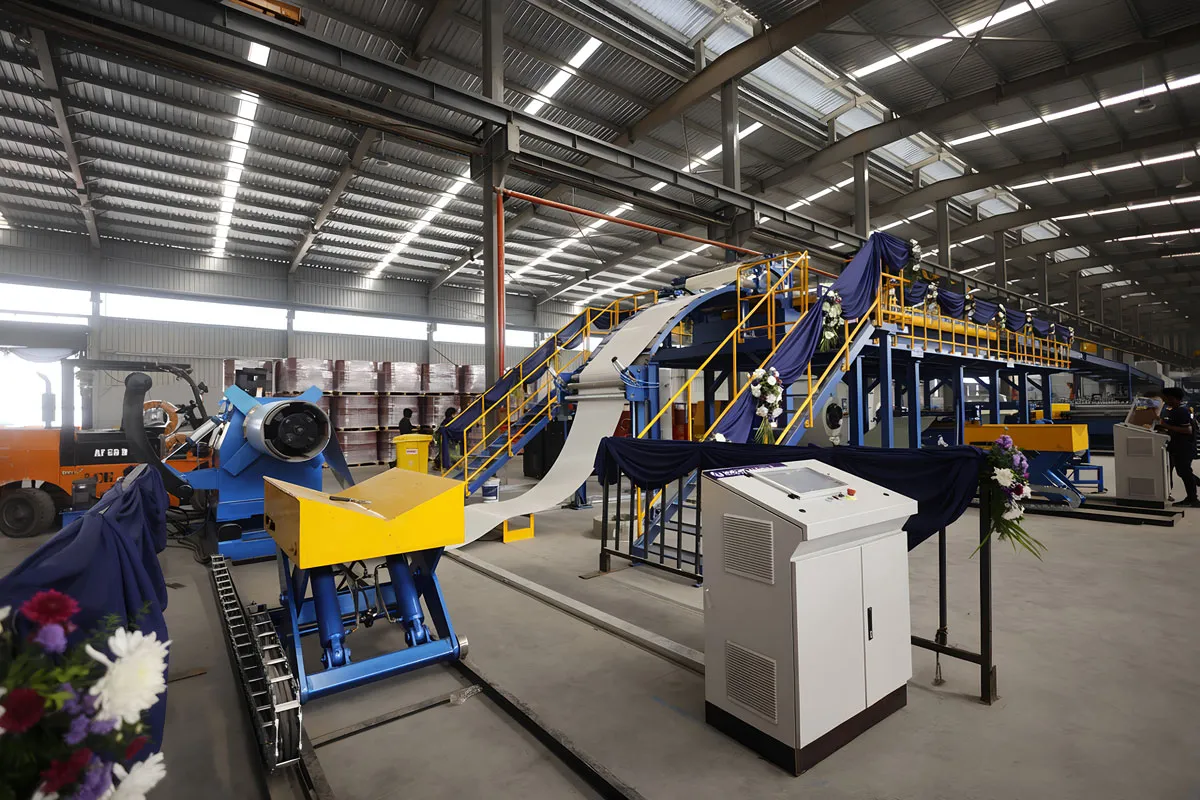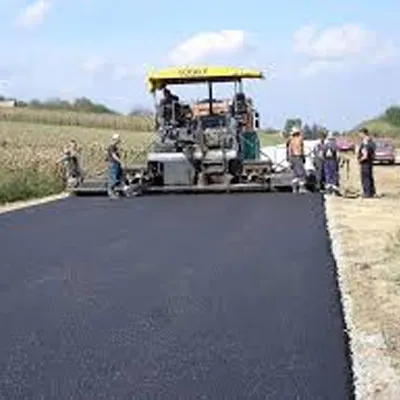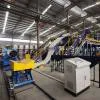1. Introduction
The world’s population is projected to grow from its current level of about 6.6 billion to somewhere between 9.5 billion and 12.9 billion by 2100. This population growth will come with huge demands for housing, water, food, education and other life essentials, all of which will require huge growth in infrastructure. What is clear, however, is that population growth does not correlate to economic growth and that economic growth is likely a better indicator of future demands for cement.
Most economic growth in this century is projected to be in developing countries and statistics already show that these are the same places that are now consuming 93% of the cement produced globally. Consequently, global demand for cement is presently growing at a rate of about 4 % per annum. It is in these places of high growth and need for new infrastructure where aggressive changes in construction practices may also initiate fundamental change in the chemistry of infrastructure cement.
While the composition of OPC has remained largely the same since last century, and the mechanisms of OPC hydration and structure of C-S-H remain difficult to interpret. However, major advances in the use and performance of cement have come from three fundamental areas: (1) construction technology; (2) the science and engineering of composite materials; and (3) admixture chemistry, both organic and inorganic.
20th century construction technology gave rise to fast-track paving and construction methodologies, the ability to pump concrete over large distances, both horizontally and vertically, and the ready mixed concrete industry. The advent and widespread use of organic and inorganic chemical admixtures has enabled the development of high strength and, more recently, self-compacting concrete. Collectively, these material innovations have enabled the growth of modern infrastructure, the construction of the world’s tallest buildings, roads and railways etc.
2. Future of Ordinary Portland Cement (OPC) System
OPC will probably be produced for at least next 100 years, but likely in an evolved form, at a reduced scale, and by processes that utilize renewable energy and carbon sequestration technologies. The composition of OPC clinker will likely move towards lower CO2 emissions per ton by formulating reactive belite chemistries, by better exploitation of the ability of impurities to manipulate clinker reactivity, and by bringing new efficiencies to the clinkering cycle, the latter of which will become less empirical through close integration of kinetic and thermodynamic data.
Among alternative cements, formulations with reduced CO2 emissions, or that are even CO2 negative, are main objective for further development. An important aspect of such cements is the possibility they offer to realize beneficial utilization of CO2. However, all current propositions for cement compositions that sequester CO2 are not yet competitive with OPC.
3. Alternate Cement Systems
Alternative cements could be defined as inorganic cementitious materials that can be used for construction, but whose properties and composition are not yet specified by existing standards, codal practices and regulations. Some examples of this include calcium aluminate cement (CAC), and Sorel cement etc. All cements have elemental composition, primarily comprising Si, O, Ca, Al, Fe, and Mg. This chemistry is not surprising on an economic basis because cementing materials must be composed of materials that are abundant in the Earth’s crust.
The evolution of new cement types will need to overcome both technical and non-technical barriers. Requirements for mechanical performance and long-term durability are critical, but standards and specifications, whether prescriptive or performance-based, will also require robust evolution. In addition, confidence in new materials must be acquired by the end user (e.g., contractors) in the field-based application of new cements. In each case, some application flexibility will be needed, because new cements may need to be processed and placed in a manner somewhat different from OPC-based concrete.
3.1. Carbonated Cements
Calcium-rich OPC hydrates (e.g., Ca (OH)2, and C-S-H) carbonate spontaneously to form CaCO3, amorphous hydrated silica and water. The carbonation reaction is sensitive to the presence of water which accelerate the reaction and causes high pressure and temperature. Based on the tendency of calcium (and magnesium)-rich compounds to carbonate, three propositions for beneficial CO2 uptake which imparts hydraulic properties to cement are proposed:
A. Carbonation of brackish (Mg, Ca-rich) brines
Concentrated brines that result from the desalination of seawater have magnesium-rich and calcium-rich compositions. When CO2 is dissolved in such brine compositions – (Mg, Ca) carbonates are spontaneously formed. It was found that hydrated magnesium carbonate has cementing characteristics.
B. Carbonation of hydrated lime
Lime mortars “mature” by taking up CO2 over long periods of exposure to the atmosphere. Lime carbonation by such an approach result in the formation of a monophasic CaCO3 end-product (and water) – whose crystal morphology can be controlled by varying the reaction conditions. While stable compacts can be formed, the performance characteristics of the carbonated solids require more in-depth investigations.
C. Carbonation of calcium silicates
Hydrated calcium silicates are well-known to carbonate. Based on this idea, there has been some interest in contacting wollastonite (CaSiO3) slurries with carbonated water at elevated pressure and temperature.
Therefore, carbonation processing is likely best-suited to factory production in the style of precast concrete manufacture today. While the style of such manufacture is evolutionary, encompassing larger and more sophisticated dimensions of additive manufacturing, the promise of carbonation relies on practical cost-effective, industrially viable processing solutions, and the introduction of incentives or credits for cementation agents that take up CO2.
3.2. Calcium Sulfoaluminate Cements (CSA)
Calcium sulfoaluminate (CSA) cements are types of cements that contain high alumina content. To produce CSA clinker, bauxite, limestone, and gypsum are mixed together in a rotary kiln. CSA cements were developed in China and came to prominence since the late 1970s. The main constituents of the cement powder contain belite phase (C2S), ye’elimite (C4A3S), and gypsum (CSH2) [90–92]. Upon hydration, CSA cements form ettringite according to the following reactions.
The classical calcium sulfoaluminate clinkers are predominately based on 35–70% ye’elimite (C4A3S), 30% belite (β−C2S), with lesser percentages 10–30% of phases like, C12A7, C4AF, and CaO, but C2AS and CS are not desirable due to their deleterious nature. Raw mix design of CSA compositions, needs less limestone that not only benefits in reduced thermal energy (up to 25%) but also decreased CO2 emissions (up to 20%) compared to the Portland cement. Industrial waste materials can also be used as raw materials for manufacturing CSA cements and therefore, calcium sulphoaluminate cements have significant environmental advantages
3.3. Active Belite Cements
The belite compound in cement (Ca2SiO4, abbreviated as C2S) is known to contribute significantly to the strength of hydrated OPC especially after the first few days or weeks of hydration.
Since belite with less lime than alite (Ca3SiO5), it can be produced with a lower CO2 impact.
The reactive belite is facilitated by the fact that belite has several polymorphs. The olivine structured γ-C2S structure is essentially unreactive with water, but the β-C2S structure that is stabilized by dopants in clinkers is much more reactive with water.
The alpha polymorphs are reported to be reactive, although efforts to stabilize them at lower temperatures have not been successful. However, the origin of belite and, more broadly, of clinker reactivity is still a matter of debate.
The thermodynamic stability differences among the different polymorphs are important because phase transformations that occur during cooling can produce twinning, exsolution, and mechanical strain.
So far, it has not been possible to deconvolute many factors controlling belite reactivity, but recent research shows systematic approaches by which the role of defects and clinker processing could be decoupled to render new understanding.
This renews the potential for controlling reactivity enhancement, making belitic cements a valuable proposition in reducing the industrial reliance on Alite-dominant clinkers for early strength.
3.4. Magnesia Based Cements
Magnesia cements are based on magnesium oxide (MgO) as main ingredient. It is developed by Sorel in 1867 and is known as “magnesite” or magnesium oxychloride cements. At early stages, this type of cements was produced by using magnesium oxide and aqueous magnesium chloride. The resulting hardened product consists of four major bonding phases as: 2Mg(OH)2 • MgCl2 • 4H20, 3Mg(OH)2 • MgCl2 • 8H2O, 5Mg(OH)2 • MgCl2 • 5H2O, and 9Mg(OH)2 • MgCl2 • H2O. However, it was soon recorded that magnesium oxychloride phase is not stable after an exposure to water over long time as it results into leaching out in form of magnesium chloride and magnesium oxide. This limits the practical application of the cement to certain properties in construction even though it showed high strength properties, high fire resistance, high abrasion, and exemption of wet curing compared to traditional OPC. In the recent decade, after Harrison patented reactive MgO cements the production has been significantly increased to 14 Mt per year. Magnesium oxysulphate cements, based on magnesium sulphate solution and magnesium oxide, has similar properties to Sorel cements but poor weathering resistance has confined its utilization on mass scale.
3.5. Geopolymer Cement
In the absence of precise definition, geopolymers are formed by reaction of an aluminosilicate solid (e.g., clay, fly ash, or slag) with an alkali source, typically sodium or potassium hydroxide or silicate, or mixtures thereof, with water.
The main bonding phase formed is a hydrous gel with poor long-range order that contains sodium (or potassium), and oxides of Aluminium and silicon (abbreviated as N-A-SH). This gel is analogous to, but not continuously miscible with, the C-A-S-H gels formed in hydrated OPC. For example, sodium is strongly bonded in the gel, unlike sodium in C-A-S-H, which is readily leached.
Alkalis in geopolymers are bonded into a rather open and negatively-charged Al-Si network. Calcium has also been used to replace part of the alkalis to produce a hybrid cementing matrix.
The main concern about geopolymers is their inability to react sufficiently to produce early-age strength unless significant heat curing and elevated alkali concentrations are used. The N-A-S-H gel is thermally fragile and crystallizes at temperatures exceeding 60 °C. This results in the formation of phases similar to sodalite, which have inferior binding characteristics compared to the original gel.
Conclusions
Substantial progress should be made scientifically, before these cements can be manufactured at industrial scales. On the other hand, Calcium Sulpho Aluminate cements (CSA) appear to be emerging as a leading alternative cement over the next decade. Indeed, in near future commercial production of CSA cements appears to be implemented in the Western world.
In broader terms, the stimulus and time scale to innovation and evolution of alternative cements depends on public policy. Scientific developments and technology can inform debates, but if the cement industry is to remain competitive in the face of possible policy-driven mandates, it needs to present realistic, viable and impactful alternatives to traditional OPC.
An important concern that arises along with requirement to replace OPC, whether by supplementary cementitious materials or by new cement types, is whether a new formulation can provide high enough pH to passivate the reinforcing steel, which OPC does quite nicely.
A shift away from OPC will tend to compromise the calcium buffer, and hence the extent of passivity afforded, but simultaneous changes in reinforcing materials away from ferrous metals (e.g. fiber-reinforced polymers) may reduce the need for corrosion resistance. Nevertheless, because of the driving force to reduce CO2 emissions, some alternative cements that may emerge in the next 100 years appear promising.
Reference
LinkedIn posts of Dr. S.B.Hegde




















